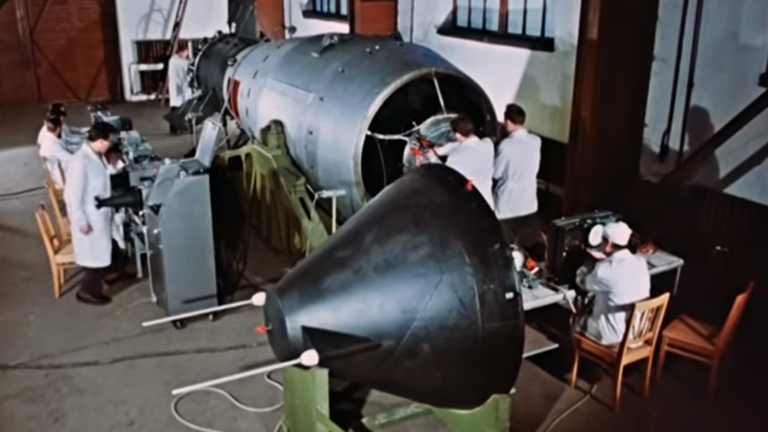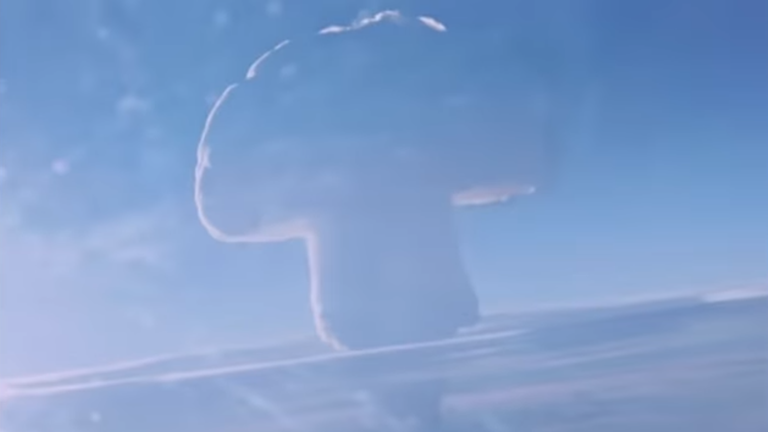A declassified video showing the detonation of the most powerful nuclear weapon ever built and tested, the Tsar Bomba, has been published.
When the hydrogen bomb was tested over the Arctic archipelago of Novaya Zemlya on 30 October 1961, it created the most powerful man-made explosion ever, equivalent to 50 megatons of TNT.
Documentary footage opening with a caption declaring it to be “Top Secret” was released by Russian nuclear energy agency Rosatom in connection with the 75th anniversary of the nuclear industry.
The video shows the massive explosion from a range of angles and distances, as well as revealing some of the work that went into building the device.
According to the documentary, the Soviet bomber used to drop the device had to be coated with reflective white paint to protect it against the radiation from the blast.
The bomb is also said to have been dropped with an enormous parachute to allow the plane to get far enough away before it detonated.
Tasr Bomba was detonated 2.4 miles (4km) above the ground and the explosion utterly destroyed everything within a 21-mile (35km) radius.
The blast spread even further, destroying all the buildings in a military town called Severny 34 miles (55km) away, and windows were reportedly cracked up to 560 miles (900km) from ground zero.
The shock wave was recorded by seismometers across the world, while the mushroom cloud rose 42 miles (67km) into the atmosphere, seven times the height of Mount Everest.
Despite its terrifying power, the bomb was considered something of a gimmick by US analysts, who regarded it to have limited military use.
The real impact was geopolitical.
Following the fallout of nuclear material across Scandinavia, two years after the detonation the US and the Soviet Union signed a treaty banning nuclear tests unless they were underground.


